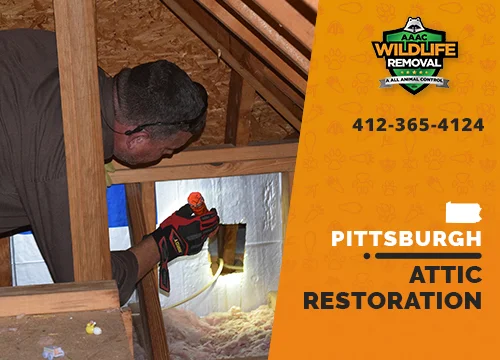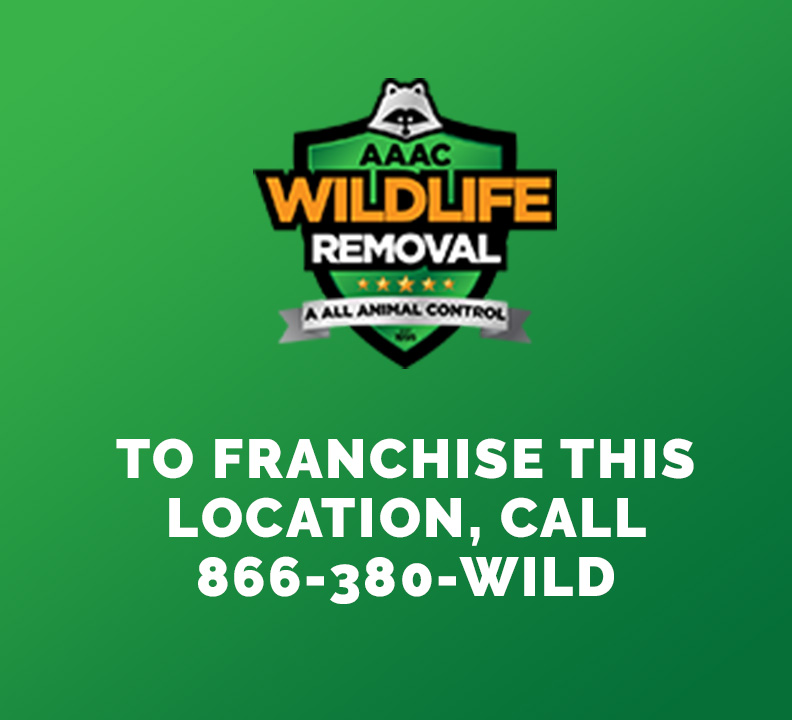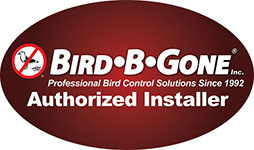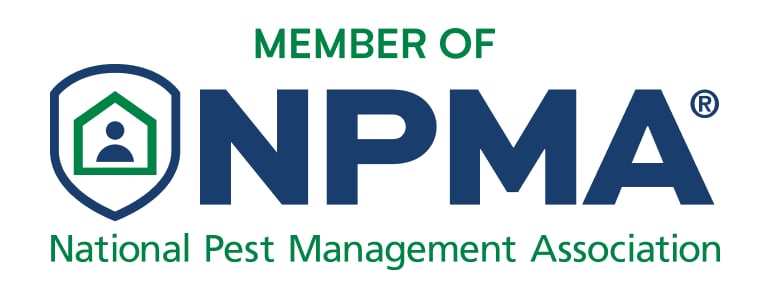How We Restore Your Attic
Pests may not be able to chew through insulation, but they can certainly tear it up. The insulation material becomes much more than just bedding. After all, the animals that tear down your attic’s barriers can also make a home there and leave behind their contaminants like urine or feces. These areas can easily allow air in or out, which is why you could be losing money. These are the steps that we follow when restoring an attic.

Scoop out Larger Feces Clumps
The first step of an attic restoration is to remove large amounts of feces left behind by insects. We use a long-handled tool for removing the feces off the ceilings and walls. If the droppings are dry or stuck on hard surfaces we will soak them in water, and then use a wire brush for scraping them off.
AAAC technicians use a tool with an extendable handle that allows them to climb up onto your roof to reach high places where squirrels and raccoons often leave their feces. The technicians may need to loosen large quantities of droppings from rafters and eaves so that they can safely remove them by hand or vacuum.

Vacuum Small Feces
To decontaminate an attic, the next step is to vacuum small rodent feces from it. This is the only way to remove tiny pellets of feces found in attics from rats, mice and other rodents. AAAC uses a specially designed machine with a long enough hose so it can reach even the farthest corners of your attic. The machine comes with an extra-long vacuum tube, high-velocity suction, and HEPA filter for removing animal hairs and droppings from insulation and other surfaces. AAAC has a special brush attachment to reach small droppings in tight corners and ceilings. This attachment is designed to reach tight areas, such as corners and areas near the roof.
AAAC uses ultraviolet light to find small feces in attics. Any surface that has feces left behind by animals like bats, rats or raccoons will look like black spots when exposed to UV light.

Air Duct Cleaning & Repair
AAAC Wildlife Control also offers air duct restoration and repair services to remove animal hair, droppings, and urine from the ductwork. AAAC uses a special tool for cleaning the inside of the ducts. Once this is done, we can spray a disinfectant on the ducts to eliminate any remaining bacteria or viruses that may have been left behind by bats, rats, raccoons, or squirrels.

Decontaminate the Attic
After removing the rodents, the main part of an attic reconstruction project is the decontamination. This is a very important part of the job and it’s done to ensure your family stays safe from microbial pathogens that could be harmful if inhaled or ingested.
AAAC Wildlife Removal uses ultraviolet light to locate areas that have been contaminated by rodent droppings or other animals for this part of its attic restoration service. The technicians then use a disinfectant spray for cleaning any areas or surfaces that are affected by animal droppings.
AAAC Wildlife Removal will fog up the attic using a fine mist in order to kill microorganisms from animal feces. They use an electric sprayer to make a mist of microscopic drops that is invisible to the naked eye. The chemical residue from the droplets’ evaporation is toxic to microorganisms including bacteria, algae, and viruses.
The attic restoration process also requires that the attic be dried. This is because moisture can encourage mold growth if it isn’t removed. AAAC may use a dehumidifier to ensure that all moisture evaporates from the attic wood and insulation. This will also help prevent mold growth during the re-insulation.

Full Attic Insulation Replacement
Technicians will then remove insulation and install new insulation to complete the restoration process. The old insulation must be removed carefully to prevent ruining adjacent areas or leaving a mess behind. Insulation is often wrapped around joists/rafters. You should not pull it too hard as it could cause damage to your attic’s wood structures.
Mold spores and other potentially harmful materials are often found in the insulation and can be released into the air when it is removed. Our technicians are required to wear masks in order not to breathe in any dangerous particles or substances that could get into the ducts.
Technicians will install new insulation once the old insulation has been removed. The insulation must be cut so it fits snugly around the joists and rafters. You may have to cut things closer, but there is always a chance that you will leave bits behind. For installation purposes, technicians will use masking tape and an adhesive duct sealer.
What is full attic restoration?
Attic Restoration is a process that restores the function and appearance to an attic. The general components of attic restoration are re-insulation, decontamination, and removing waste.
Attics lose their ability to insulate over time due to accumulated dust, animal droppings or ice accumulation. This causes more heat loss through your home than it would if the insulation was intact. Use fans to clean up any interior areas that are affected by moisture. This includes bathrooms and closets where water has leaked away dirt and other debris.
How do you disinfect an attic?
To disinfect an attic, you must first remove old insulation then clean the attic with a disinfectant or an ultraviolet sterilizer. To prevent reinfection, it is also important to clean all surfaces that have been in contact with contaminated material.
It begins by removing insulation in order to perform safe and effective disinfecting. The use of a strong suction system is also necessary for attic restoration to remove any mold or bacteria from surfaces such as wood joists or roof rafters. After the suction process is finished, a biocides washdown is used to kill any remaining mold. The antimicrobial compound also prevents mold and mildew from growing in the future. The final step is light sterilization, which disinfects the area using ultraviolet lights similar to those used in hospitals.
Total Attic Restoration Solutions
AAAC Wildlife Removal offers attic restoration services. We can clean out attics after wildlife removal. We clean animal feces, remove soiled insulation, and re-insulate the attic to bring it back to its original condition. For any droppings that are dried or stuck on hard surfaces, AAAC Wildlife will soak them with water and then scrape them off with a wire brush. AAAC Pest Control uses a tool with an extended handle that allows them to reach high places where squirrels and raccoons often leave their feces. For those who need their air ducts to be completely cleaned and decontaminated, we also offer Air Duct Clean-up & Repair. Contact us today to have your attic cleaned out!










